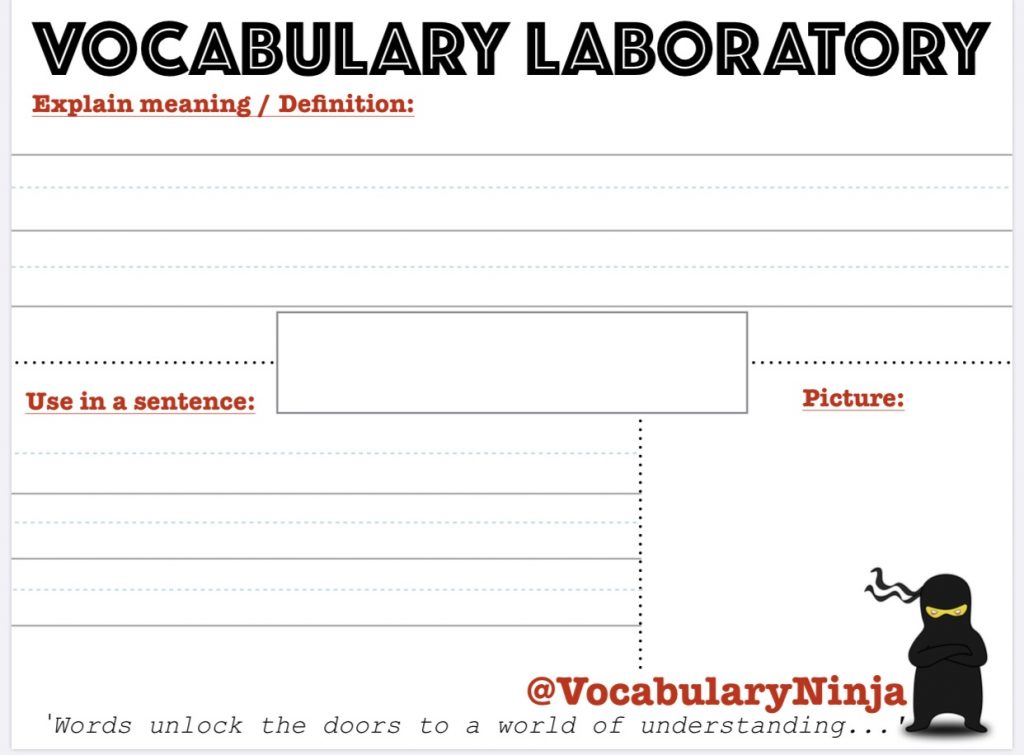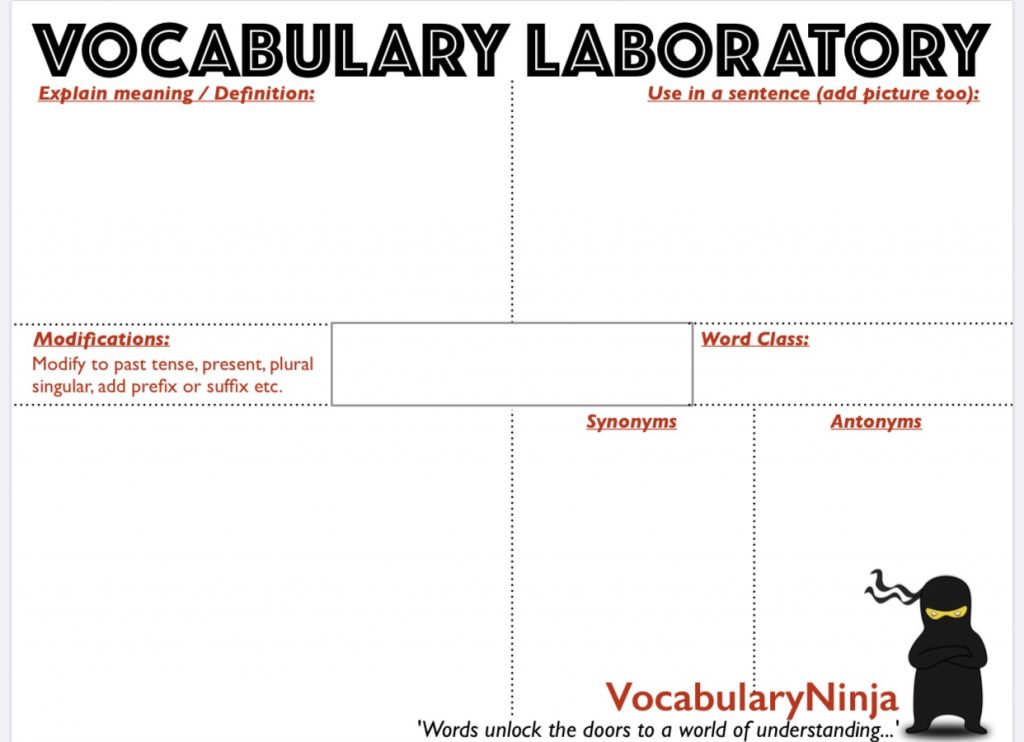In this blog, I’ll be expanding on my ideas for distance learning, to share what’s out there for you and your students in terms of English.
When setting activities for English, it’s very difficult to know how much to expect of children without having a teacher present. With that said, I devised a timetable below that you could follow to ensure that:
- Different elements of English are being covered.
- Activities are purposeful and appropriate for distance learning.

This is completely different to my normal structure in class- find it here: How to structure an English Lesson
This type of structure is a bare outline of activities you could choose. For younger classes, more Phonics activities would be added in here.
Vocabulary: Activities for Distance Learning
Teaching Vocabulary is such an essential part of English teaching that I didn’t want to omit. With that in mind, including Vocabulary into my distance learning lessons meant I needed to find activities that were simple, effective and fun!
I purchased a Vocabulary Ninja subscription to use their QUALITY resources as part of my English lessons. I chose to use the ‘Word of the Day’ and ‘Vocabulary Laboratory’ resources simultaneously. See below:


Vocabulary Ninja have given me a 10% discount off their resources when you use code rebecca at checkout-yay! This is an affiliate link!
The Vocabulary Laboratory resource has been carefully crafted to provide an in depth opportunity to focus on a particular word. I plan to use the ‘Word of the Week’ vocabulary as a bank of words to choose from. I’ll share the word of the week with the children on Monday and they will fill in the Vocabulary Laboratory document themselves, using a dictionary to research the new word.
The word of the week example will be shared later that evening for children to self-assess, checking that they have found the correct definition. I also love that there is a section for children to draw pictures to represent the word too. There’s also a more detailed version of the Vocabulary Laboratory for older classes. See below:

Reading: Activities for Distance Learning
Reading is my favourite subject to teach and not being able to share a story with my class is tough. However, Reading should be included in distance learning sessions in some form or another.
To keep it purposeful try and set your class a reading task that relates to the writing task that you will set for later in the week. For instance, if you know your class will be writing a non-fiction text that week, set them a non-fiction text to read. This way, they’ll get used to the language, layout and style needed.
Below is a list of places for you to get comprehensions at the click of a button.
- MrsMactivity(Use code REBECCA to get 10% off your subscription).

- Vocabulary Ninja Comprehension Packs (Use code rebecca to get 10% off your subscription).


Writing: Activities for Distance Learning
It is difficult to expect children to write in a specific genre of writing, with little input or teaching per say. In order to set them up for success, it is important to expose the children to that text type as much as possible. Assigning children a reading comprehension of that text type is one of those ways as mentioned above.
I would dedicate three days in the week to writing to allow children to build up to a written piece, following a similar structure to that of below:
- Day 1/3- Point out the features of the particular text type, asking children to engage with feature spotting.
- Day 2/3- Choose a topic and build a bank of vocabulary phrases to use.
- Day 3/3- Write a piece in that particular genre.
On Day 1/3
This activity can be as practical, hands-on as you like. I would include some form of oral language in here where possible.
Things like: discuss this topic with a parent or sibling and give your opinion. Or create a short drama on this topic with a parent or sibling. Getting children talking is so so important to their language development.
Following that, ask children to use the text from the comprehension they had during the week and check if it contains certain features that are essential to that genre, using a form of checklist like this:

This way they are familiar with the text and can analyse particular features that they might need. I found these checklists here. There are more available on Twinkl also.
On Day 2/3
Now that children are more familiar with that specific genre of writing, asking children to brain storm a topic that they can write about the following day. These brain storms can be as colourful and creative as they like.
Perhaps send them a draft template for them to gather some ideas and key vocabulary before they write their final piece the next day.
Provide your class with as much support as you think they’ll need. Sending them sentence stems may be beneficial for those who struggle with writing. I found them here.

On Day 3
On this day, children can use the model text from their Reading lesson, their draft from the day before and anymore scaffolding that you feel is necessary for them to write in this particular genre.
For some, it might be useful to send them on a “fill in the blanks” style template. They’re easy to find on websites like Twinkl too.
I have assigned 15 minutes additional reading daily also. However, one day a week, I like to focus on their comprehension skills too to make sure they’re understanding what they’re reading.
I hope this post was somewhat helpful for those of you who are unsure of what to assign with regards to English. These are sample activities that you could do, but could definitely be expanded on. This is just the format I try to use to shape my English lessons during distance learning.
For more posts on distance learning see below:
Creativity in Distance Learning
Easy Home School Activities- Hands on Learning for Kids
Home Learning: Fun and Educational things to do.
Coronavirus Duty: How to teach from home.
Activities to do during online meetings
Links to MrsMactivity and Vocabulary Ninja are affiliate links. This means that if you choose to use by 10% off code, I earn a small commission at no extra cost to you. See my Disclosure Policy for more information.
All the best,



[…] English: Activities for Distance Learning […]